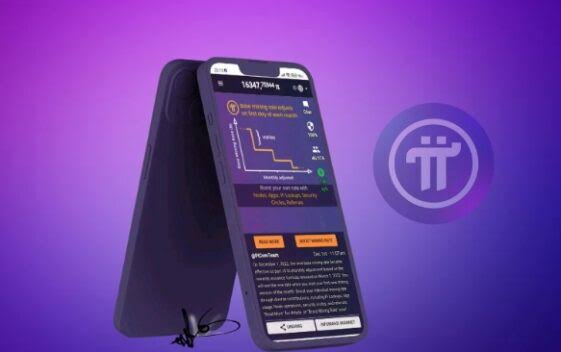The Pi Network, which initially began as a bold experiment to make cryptocurrency accessible to the general public, has grown into a global community of millions. With the highly anticipated mainnet launch set for December 2024, Pi Network is preparing for a major leap forward, moving from an enclosed testing environment to a fully functional and decentralized blockchain. This milestone is set to bring about significant changes within the Pi Network ecosystem, and it holds the potential to impact the broader cryptocurrency landscape and Web3 movement.
In this article, we’ll delve into what the mainnet launch entails, why it’s pivotal for Pi Network, and the implications it may have on users, developers, and the larger ecosystem. We’ll also explore the unique aspects of Pi Network’s approach to decentralization, the technical and regulatory challenges that may arise, and how Pi’s launch could mark a new phase for Web3 and the decentralized internet.
1. Understanding the Pi Network: From Concept to Community
The Pi Network was founded with the objective of making cryptocurrency more accessible to the general public. Traditional cryptocurrencies like Bitcoin and Ethereum often require users to have specialized hardware and technical expertise to participate in their networks fully. Recognizing these barriers, Pi Network’s founders created an innovative mobile-based mining app that allows users to mine Pi tokens from their smartphones without significant energy consumption. This approach allowed Pi Network to build a large user base, attracting a wide range of participants who could join the network simply by downloading an app and pressing a button daily to earn Pi tokens.
Pi Network’s vision extends beyond just a mobile mining experience; the platform aims to build a user-driven, decentralized ecosystem that includes peer-to-peer transactions, decentralized applications (dApps), and more. With over 45 million engaged members worldwide, Pi Network has successfully created a massive community centered on the idea of a more inclusive and user-friendly decentralized internet.
2. What the Mainnet Launch Means for Pi Network
The mainnet launch in December 2024 marks a crucial transition for Pi Network. Presently, Pi operates in an enclosed environment known as the “enclosed mainnet,” where users can transact Pi tokens with each other within a controlled ecosystem. This has allowed Pi’s developers to test the blockchain, iron out technical issues, and refine the system’s functionality. However, once the open mainnet goes live, Pi Network will become fully decentralized and open, meaning users will be able to transfer Pi tokens to external wallets, engage with exchanges, and participate in a broader range of dApps.
The shift to the open mainnet will:
Enable Pi Token Liquidity: Once the mainnet is live, users will be able to transfer their Pi tokens to other wallets and potentially list them on exchanges. This will provide liquidity to Pi tokens, allowing users to exchange Pi for other cryptocurrencies or fiat currencies, enhancing its real-world utility.
Support dApp Development: The open mainnet will encourage developers to create decentralized applications on Pi’s blockchain. With its large user base, Pi Network could become an attractive platform for developers aiming to reach a broad, active audience.
Empower the Community’s Role in Governance: Decentralization also involves community-led governance, meaning users within Pi Network will play a significant role in making decisions about the network’s future through a decentralized autonomous organization (DAO).
3. The Technology Behind Pi Network
Pi Network’s technical infrastructure is built to support scalability and accessibility. It utilizes a unique consensus algorithm known as the **Stellar Consensus Protocol (SCP)**, which differs from energy-intensive proof-of-work systems like Bitcoin. SCP relies on a federated consensus model that allows Pi Network to maintain a high level of security and decentralization without the need for energy-intensive mining.
In SCP, nodes (individual machines that support and validate the network) operate within “quorum slices” – a subset of nodes that a particular node trusts. This enables Pi Network to achieve consensus quickly and efficiently, making it feasible for users to participate from low-power devices like smartphones and personal computers.
The choice of SCP is significant as it aligns with Pi Network’s mission of accessibility and eco-friendliness. Unlike traditional blockchains that require specialized mining hardware, Pi’s design allows anyone with a smartphone or basic computer to run a node. This has attracted a vast community of node operators, who contribute to the network’s security and decentralization.
4. Building Towards Web3 and Decentralized Applications
The upcoming mainnet launch is a stepping stone for Pi Network’s larger vision of contributing to Web3. Web3, also known as the decentralized internet, is centered on user sovereignty, data ownership, and transparency. By launching the open mainnet, Pi Network will open doors for Web3 applications, allowing developers to build and deploy dApps that leverage Pi tokens for a variety of use cases.
Potential areas for dApp development on Pi Network include:
- DeFi Solutions: Decentralized finance (DeFi) applications could flourish on Pi Network, allowing users to engage in lending, borrowing, and staking Pi tokens within the network’s ecosystem.
- Social Media dApps: With a massive global community, Pi Network could support decentralized social media platforms that prioritize user privacy and data ownership.
- Gaming and NFTs: Pi Network’s user-friendly interface and accessible technology make it an ideal platform for gaming and NFTs, allowing users to create, buy, and sell digital assets.
5. The Economic Implications of Pi’s Mainnet Launch
With the mainnet launch, Pi Network will establish the economic infrastructure needed to support a functioning decentralized economy. Once Pi tokens can be traded openly, their value will be determined by the market, potentially creating economic opportunities for users. The open mainnet will also enable Pi tokens to be used in various applications, driving demand within the network.
To maintain a healthy ecosystem, Pi Network has taken steps to ensure responsible token distribution and circulation. For instance, Pi’s rewards and mining structure adjusts over time, aiming to achieve a balanced token supply. This adaptive approach helps maintain token scarcity, which could play a role in its long-term value.
The economic impact of Pi’s open mainnet will also extend to developers and businesses looking to integrate with the network. By providing an accessible platform with a broad user base, Pi Network offers businesses and developers a unique opportunity to engage with a decentralized economy and tap into new user segments.
6. Challenges Ahead: Scalability, Security, and Regulatory Compliance
While Pi Network’s mainnet launch holds promise, the platform faces several challenges as it moves forward:
- Scalability: As Pi Network’s user base continues to grow, maintaining scalability will be essential. The network will need to handle potentially millions of transactions per day while ensuring low fees and fast transaction times.
- Security: Decentralization can introduce security risks if not carefully managed. Pi Network will need to maintain robust security measures, particularly as it opens up to external transactions and dApps.
- Regulatory Compliance: Pi Network’s expansion into the global market will attract regulatory scrutiny. As governments worldwide develop regulatory frameworks for cryptocurrencies, Pi Network will need to ensure compliance while safeguarding its decentralized nature.
To address these challenges, Pi Network is likely to continue investing in technology upgrades and security audits. The network’s federated consensus model and community-driven governance can also help in maintaining scalability and regulatory adaptability. Continue Reading
7. The Role of Community in Pi Network’s Future
Community engagement is at the core of Pi Network’s philosophy. Unlike many blockchain projects, Pi Network has fostered a grassroots approach to growth, with millions of users actively participating in its ecosystem. This community-driven model has enabled Pi Network to build a decentralized, resilient network supported by its users.
As Pi Network transitions to the mainnet, the community’s role will become even more significant. Through community governance, users will have a say in key decisions affecting the network, from protocol upgrades to the development of new features. Pi Network’s emphasis on decentralization means that the community will play a central role in shaping the platform’s future direction.
The success of Pi Network will largely depend on its ability to harness the community’s insights and enthusiasm, as well as its capacity to adapt to their evolving needs. By aligning the network’s incentives with user interests, Pi Network has positioned itself as a unique platform that combines technological innovation with grassroots empowerment.
8. Potential Implications for Web3 and the Decentralized Internet
Pi Network’s mainnet launch could have broader implications for Web3 and the decentralized internet. If successful, Pi Network’s model could inspire other projects to focus on accessibility, inclusivity, and community-driven growth. Pi Network’s open mainnet also aligns with the broader Web3 movement’s goal of building a decentralized internet that is transparent, secure, and user-centric.
As Pi Network attracts developers and businesses, it could help catalyze innovation within Web3 by providing an accessible platform for dApp development. The integration of Pi Network into the larger decentralized ecosystem could contribute to the growth of Web3 infrastructure, including decentralized identity, data storage, and finance solutions.
The decentralized internet has been a long-standing vision within the blockchain community, and Pi Network’s approach may serve as a practical model for how Web3 can evolve from concept to reality. By offering users an inclusive platform and developers a ready-made audience, Pi Network could become a hub for decentralized innovation.
9. What to Expect as Pi Network’s Mainnet Launch Approaches
As the December 2024 mainnet launch approaches, anticipation is building within the Pi Network community. In preparation for this milestone, Pi Network has been conducting technical tests, refining its user experience, and addressing feedback from its community. The transition to mainnet will mark the beginning of a new phase for Pi Network, characterized by increased autonomy, user-driven governance, and the potential for economic opportunities within its ecosystem.
Leading up to the launch, Pi Network is likely to release further updates on its mainnet
















